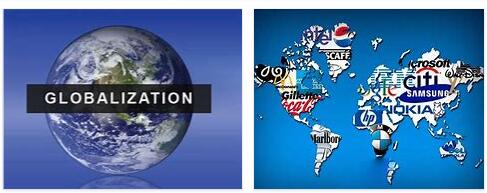
Economic drivers: The economic influencing factors can be divided into macroeconomic and microeconomic factors. The most significant macroeconomic driving force is the increase in the cross-border mobility of physical, financial, human and knowledge capital. Compared with location-based production factors such as natural resources, physical and financial capital are production factors that can be found worldwide for locations and investment opportunities with the most favorable return and risk profiles. At the corporate level, this has led to the new appearance of location innovations (location competition). In addition to the factors physical and financial capital, it is also the increasing mobility of human and knowledge capital that is causing a progressive change in the global economic environment, by contributing to a more even spread of technological and entrepreneurial know-how. It is preferably innovative, creative and knowledgeable groups of people who strive for the best possible scope for development, development and design worldwide and who participate in the international division of labor for the purpose of acquiring and utilizing new knowledge. The ever faster dissemination of new knowledge around the world not only results in an accelerated meltdown of innovative lead and the associated monopoly position, but also a process of the tendency towards harmonization of production technologies in different countries, which in turn urges companies to optimize their locations around the world.
At the microeconomic level, entrepreneurial activities take place, which are at the same time the engine of development and reactions to changes in the global competitive environment. The main players in the world markets for goods, services and factors of production are multinational, global and transnational companies (multinational companies) as well as institutional investors who align their strategic investment, production and sales plans worldwide and carry out global portfolio management. They not only passively wait for a “globalization pull” coming from outside, but at the same time develop a “globalization pressure” from within. The urge for company growth plays an essential role as a globalization driver.
The increased mobility of production factors and the accelerated integration of the financial markets are just as significant differences from earlier phases of internationalization as the increased development of global or transnational companies, networks and strategic alliances.
Economic dimensions
According to beautyphoon.com, the globalization of the economy takes place within companies as well as in the markets and influences competition and the labor market.
Globalization of the company: When we talk about the globalization of companies, we usually mean the global orientations of individual functional areas such as marketing, production, procurement, research and development, financing or even personnel recruitment. In their entirety, they fit into a more or less consistent globalization strategy that ultimately requires the establishment of a transnational organizational structure and a global corporate culture. With the increasing integration of the world goods and factor markets, there was a disintegration of production processes and service functions, whereby individual value-added activities abroad are combined with those at home. In the event of splits in the value chain,
The deepening of processes based on the division of labor within globally active companies, corporate or value-added networks and strategic alliances has resulted in a new dimension in the international division of labor, which is also known as vertical integration. The pacemakers of globalization are primarily the transnational companies, for which, in contrast to the traditional multinational companies, there are no longer any home markets or foreign branches, but only the world market as an economically relevant unit. They focus their global activities on the basis of their strategic resources and core competencies, outsource all other added value contributions and, for this purpose, operate global procurement chains. The interaction of different companies in global value creation networks serves the purpose of bundling expert knowledge and by coupling different talents to be able to solve specific customer problems better and faster. A cultural diversity of employees with different skills and knowledge, talents and ways of thinking contributes to the fruitful development of new ideas, products and production processes.
Globalization of the markets: In addition to the companies themselves, their products have also become increasingly global; their individual parts and pre-assembled components come from all over the world. Through the increasing exchange of information, tourism and business travel, there is also a gradual convergence of lifestyles and consumption habits in different cultures, which, in connection with an approximation of income structures in highly developed countries, has already led to a certain homogenization of needs and tastes in some market segments. On the other hand, the differentiation of the demand preferences of better-off consumers, which can be observed worldwide, results in the need for companies to differentiate between end products (e.g. automobiles, entertainment electronics).
Globalization
Globalization, a catchphrase for the increasing internationalization of the commodity and financial markets.
Large international corporations take advantage of the cost and location advantages that are possible in the various countries to increase their profit opportunities. The growing economic interdependence is favored by new technologies (especially in communication, information and transport).